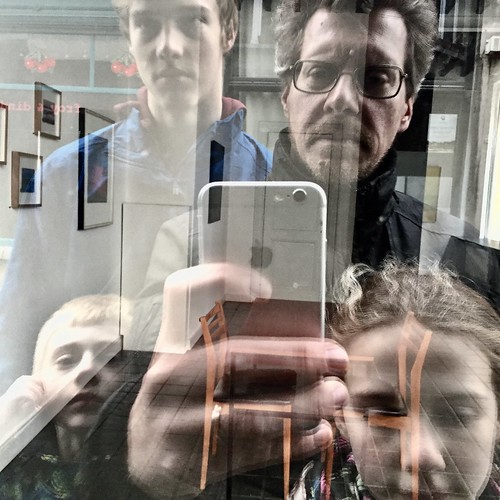A PRICKLE1 yeast two-hybrid (Y2H) screen isolated the Mysterious Quick Interacting Prickle-1 Peptide (USIPP). To turally equivalent to a acknowledged brain protein, we lifted rabbit polyclonal antibodies against USIPP. The antigen utilised to elevate the antibodies was composed of amino acids 1 to 24 of USIPP because the remainder of the Ser-Phe-Leu-Leu-Arg-Asn sequence contains multiple proline residues, which might trigger minimal antigenicity. Western blots of cell lysates confirmed the anti-USIPP antibodies regarded a brainspecific, seventy four kDa protein (Fig. 4a). Confocal photographs in Fig. 4b demonstrate immunostaining with the antibodies detected expression of an unknown, endogenous protein in the dentate gyrus of the mouse hippocampus, a area that also expresses PRICKLE1 and PRICKLE2 [seven,39].
SYN1 is immunoprecipitated by USIPP antibodies. Proteins from mouse mind immunoprecipitated investigate the system by which PRICKLE1 contributes to ASD, human grownup and fetal mind cDNA libraries were screened for PRICKLE1-interacting companions employing a Y2H assay. Considering that the PRICKLE1 CIIS motif (amino acids 828 to 831) localizes the protein to the nuclear membrane [36], this motif was excluded from the display screen to ensure cytoplasmic localization. Amino  acids 1 via 827 (N-LexA-PRICKLE1-C) had been utilized as bait. Several adult and fetal brain cDNAs from constructive clones were identified as arising from the human 18S non-coding RNA (Tables 1A and 1B in File S1). Evaluation of the numerous 18S RNA-encoding clones demonstrated that they had been represented by 9 slightly diverse clones (see Strategies). These recognized 18S non-coding RNA sequences have by no means been recovered in the above 2000 Y2H screens formerly carried out (Hybrigenics Providers, Paris, France), suggesting that their assortment was not simply an artifact of the display, and that a translated product from these clones exclusively related with PRICKLE1. Alignment of the amino acid sequence encoded by these clones unveiled a forty two-residue consensus sequence, which we named Unidentified Short Interacting Prickle Peptide (USIPP), because it had no known actual match in the human proteome (Fig. 2).
acids 1 via 827 (N-LexA-PRICKLE1-C) had been utilized as bait. Several adult and fetal brain cDNAs from constructive clones were identified as arising from the human 18S non-coding RNA (Tables 1A and 1B in File S1). Evaluation of the numerous 18S RNA-encoding clones demonstrated that they had been represented by 9 slightly diverse clones (see Strategies). These recognized 18S non-coding RNA sequences have by no means been recovered in the above 2000 Y2H screens formerly carried out (Hybrigenics Providers, Paris, France), suggesting that their assortment was not simply an artifact of the display, and that a translated product from these clones exclusively related with PRICKLE1. Alignment of the amino acid sequence encoded by these clones unveiled a forty two-residue consensus sequence, which we named Unidentified Short Interacting Prickle Peptide (USIPP), because it had no known actual match in the human proteome (Fig. 2).
SYN1 peptides had been absent from the manage lane. These special peptides spanned fifty nine% of SYN1, a synaptic vesicle-associated phosphoprotein formerly implicated in ASD (Fig. 5b) [twelve].
To even more consider the mass spectrometry benefits, complete-size human SYNAPSIN Ia was Western blotted with anti-USIPP antibodies. Anti-USIPP antibodies regarded endogenous murine SYN1, GFP-USIPP, and human Myc-DDK-SYN1a (Fig. 6a). Also, staining of mouse dentate gyrus with anti-Synapsin I and anti-USIPP confirmed overlapping staining styles (Fig. S4A). Human and murine SYN1 are composed of domains A [40] which when aligned with USIPP display a location of 31% id among residues 431 and 483 in the SYN1 D area. Strikingly, this area contains most of the SYN1 mutations (A550T, Q555X, and T567A) beforehand documented in ASD (Fig. 6b) [twelve].24828823 Alignments advised that the anti-USIPP antibodies may well exclusively understand D-domain residues 431 to 483. To examination this, the USIPP/Syn1 homology region (residues 431 to 483 eGFPDhSYN1) was cloned into an expression vector and expressed in HEK293 cells cell extracts had been then immunoblotted with antiUSIPP. The antibodies identified GFP-USIPP, total duration SYN1 (Myc-DDK-Syn1), and two impartial eGFP-DhSYN1 clones (X and Y) (Fig. 6c). Fig. 5c shows consultant results of the amino acid Atomic Mass Models (AMUs) and mass to ion ratio chromatograms of a solitary peptide of SYN1, determined from the mass spectrometry.
